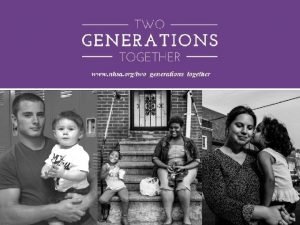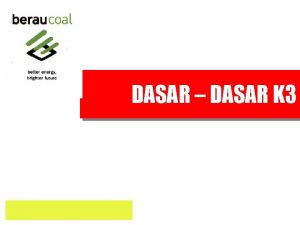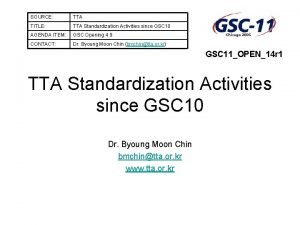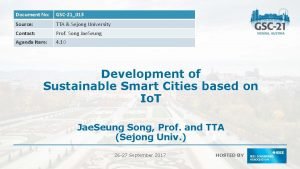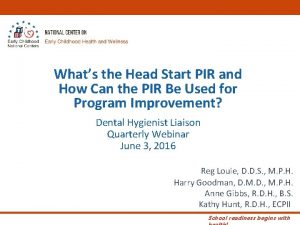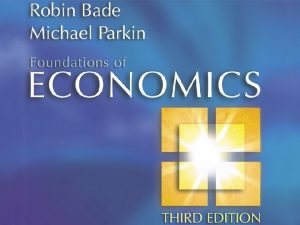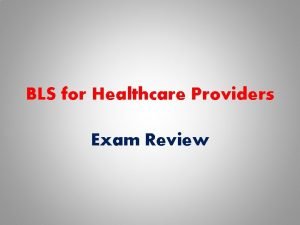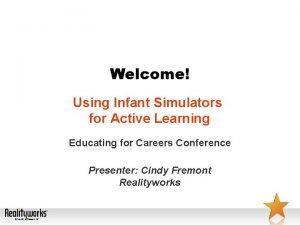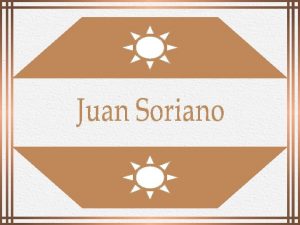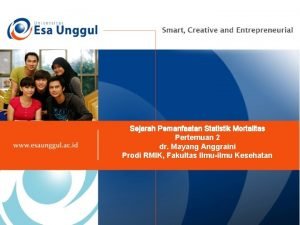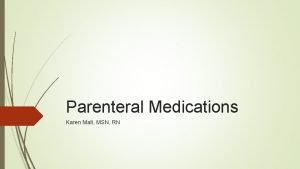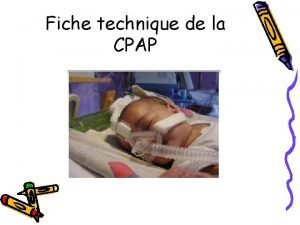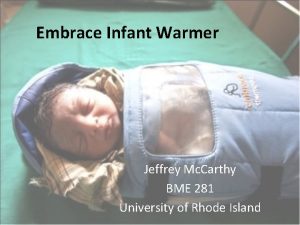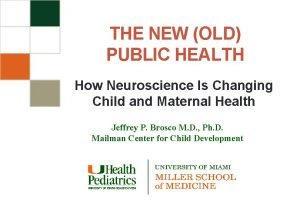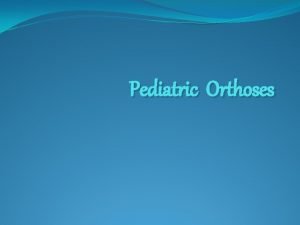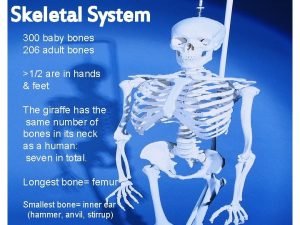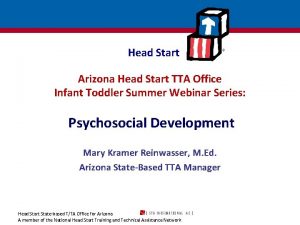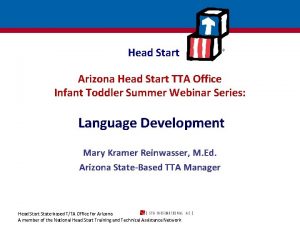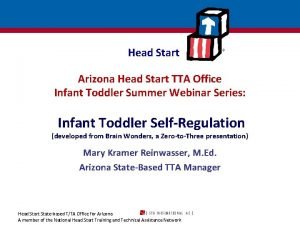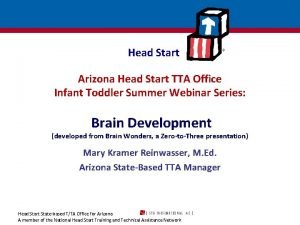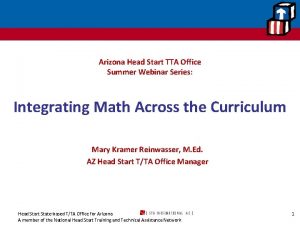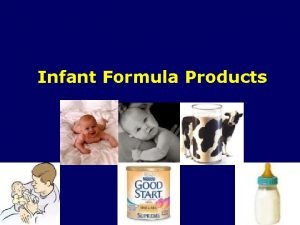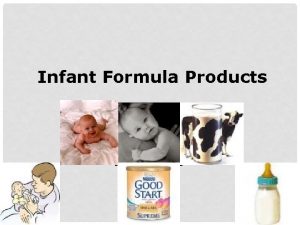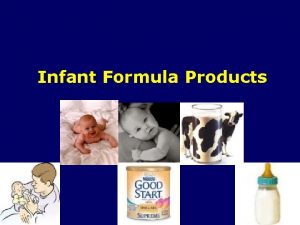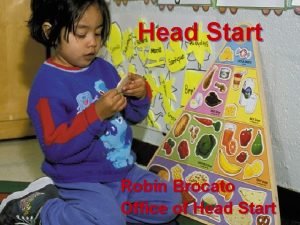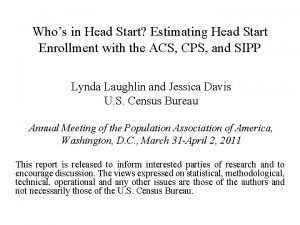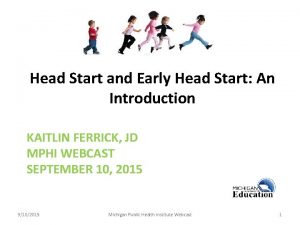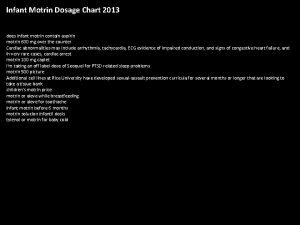Head Start Arizona Head Start TTA Office Infant



















- Slides: 19

Head Start Arizona Head Start TTA Office Infant Toddler Summer Webinar Series: Motor Development Mary Kramer Reinwasser, M. Ed. Arizona State-Based TTA Manager Head Start State-based T/TA Office for Arizona A member of the National Head Start Training and Technical Assistance Network

Agenda • • Uniqueness of infancy Responsibility of adults Physical characteristics Principles of development Reflexes and responses of a newborn Gross motor development Influences on motor development Head Start State-based T/TA Office for Arizona A member of the National Head Start Training and Technical Assistance Network 2

Learning Outcomes • Participants will be able to identify major motor milestones during the toddler years. • Participants will be able to name several influences on motor development. • Participants will be able to describe three types of perception. Head Start State-based T/TA Office for Arizona A member of the National Head Start Training and Technical Assistance Network 3

The Uniqueness of Infancy • The specificity of the inborn inclination to learn and develop • The holistic nature of learning • Rapid movement through three major developmental stages Head Start State-based T/TA Office for Arizona A member of the National Head Start Training and Technical Assistance Network 4

Responsibility of Adults • Adults support learning respectfully and responsively to child’s lessons not create lessons for child • Adult facilitates learning in a holistic manner • Adults respond to the need that fit with the child’s developmental age Head Start State-based T/TA Office for Arizona A member of the National Head Start Training and Technical Assistance Network 5

General Physical Characteristics Infants: • Head: cone-shape, fontanels • Hair: varies, may fall out • Eyes: color changes • Skin: breakouts • Umbilical cord: cleaning • Feet: rotating in, arch Head Start State-based T/TA Office for Arizona A member of the National Head Start Training and Technical Assistance Network 6

General Physical Characteristics Toddlers: • • Gains 5 to 6 pounds during second year Leaner, more muscular build by third year Head is still larger proportionally High, rounded, prominent forehead resulting from rapid brain & cranial growth By 2 ½ years, most children have all their deciduous or “baby” teeth Skeletal development continues (lengthen and ossify) Adipose, or fatty, tissue decreases By age 3, visual acuity is about 20/30 Head Start State-based T/TA Office for Arizona A member of the National Head Start Training and Technical Assistance Network 7

Principles of Development • Cephalocaudal • Proximodistal • General to specific Head Start State-based T/TA Office for Arizona A member of the National Head Start Training and Technical Assistance Network 8

Motor Development Head Start State-based T/TA Office for Arizona A member of the National Head Start Training and Technical Assistance Network 9

Newborn Reflexes and Response http: //www. youtube. com/watch? v=gy. VLD 0 hl 0 XY&feature=related Head Start State-based T/TA Office for Arizona A member of the National Head Start Training and Technical Assistance Network 10

Infant Motor Milestones • First few weeks after birth: Controlling the head and trunk • Three months: Able to raise head and chest when on her tummy; can grasp small objects that are placed in her hand. • Four to Six months: Able to roll from tummy to back and back to tummy; able to hold objects and move them from one hand to another. • Eight to nine months: Can sit without support; May crawl or creep across the floor. • Nine to Fourteen months: Creeping and/or crawling; can pull up and stand; may walk with or without support. Head Start State-based T/TA Office for Arizona A member of the National Head Start Training and Technical Assistance Network 11

12 – 18 Months • crawls well • stands alone, sits down • gestures or points to indicate wants • likes to push, pull, and dump things • pulls off hat, socks, and mittens • turns pages in a book • stacks 2 blocks • likes to poke, twist, and squeeze • enjoys flushing toilets and closing doors • enjoys carrying small objects while walking, often one in each hand • holds crayon and scribbles, but with little control • waves bye-bye and claps hands • walks without help • enjoys holding spoon when eating, but experiences difficulty in getting spoon into mouth • rolls a ball to adult on request Head Start State-based T/TA Office for Arizona A member of the National Head Start Training and Technical Assistance Network

18 – 24 Months • walks well • likes to run, but can't always stop and turn well • drinks from a straw • feeds self with a spoon • helps wash hands • stacks 2 -4 blocks • tosses or rolls a large ball • opens cabinets, drawers, and boxes • bends over to pick up toy without falling • walks up steps with help • takes steps backward • enjoys sitting on and moving small-wheeled riding toys • begins to gain some control of bowels and bladder Head Start State-based T/TA Office for Arizona A member of the National Head Start Training and Technical Assistance Network

24 – 36 Months • has almost a full set of teeth • walks up and down stairs by holding onto railing • feeds self with spoon • experiments by touching, smelling, and tasting • likes to push, pull, fill, and dump • can turn pages of a book • stacks 4 -6 objects • scribbles vigorously with crayons or markers • many children (but not all) will learn to use toilet • walks without help • walks backwards • tosses or rolls a large ball • stoops or squats • opens cabinets, drawers • can bend over to pick up toy without falling Head Start State-based T/TA Office for Arizona A member of the National Head Start Training and Technical Assistance Network

Perception and Development Perception is the neurological process by which sensory input is organized. • Visual perception: ability to recognize and discriminate faces, patterns, sizes, shapes, depth, distance, etc. • Auditory perception: use of auditory cues to identify people, objects, events, etc. • Tactile-kinesthetic perception: provides information relating to touch, texture, temperature, weight, pressure, and one’s own body positions, presences, or movements • Perceptual-motor: uses visual, auditory, tactile, and other sensory data to plan and carry out motor activities Head Start State-based T/TA Office for Arizona A member of the National Head Start Training and Technical Assistance Network 15

Influences on Motor Development Environment ⁻ Growth, strength, nutrition ⁻ Motivation Genetics – From central to peripheral – From head to toe – General to specific – From reflex to intentional Practice – New skills build out of prior abilities – Motor pathways are refined through use. Head Start State-based T/TA Office for Arizona A member of the National Head Start Training and Technical Assistance Network 16

Motor Activity Examples • • • Rolling Over Blowing Bubbles Crossing the Midline Pat-A-Cake Splish Splash Early Manipulative Skills Learning by Leaps and Bounds by Rae Pica http: //www. naeyc. org/files/yc/file/201007/L eaps. NBounds. Online. pdf Head Start State-based T/TA Office for Arizona A member of the National Head Start Training and Technical Assistance Network 17

Summary • There is a general, unfolding pattern of development. • Development follows certain principles. • There are hereditary and environmental influences on motor development. • Responsive caregiving is essential in supporting the development of infants and toddlers. Head Start State-based T/TA Office for Arizona A member of the National Head Start Training and Technical Assistance Network 18

The Arizona Head Start Training and Technical Assistance Office and STG International thank you for joining our webinar today! Please contact Mary Kramer Reinwasser at mary. reinwasser@stginternational. com for more information. This presentation, and all 2010 Summer Webinar Series presentations can be accessed at http: //www. azheadstart. org/AHSA_TTA. html Head Start State-based T/TA Office for Arizona A member of the National Head Start Training and Technical Assistance Network 19
 Arizona head start association
Arizona head start association Contoh kta dan tta
Contoh kta dan tta Tta adults
Tta adults Tta standards
Tta standards Seungtta
Seungtta Whats head start
Whats head start Jump start algorithm
Jump start algorithm It's gotta start somewhere it's gotta start sometime
It's gotta start somewhere it's gotta start sometime The infant industry argument
The infant industry argument Compression to ventilation ratio adults
Compression to ventilation ratio adults Cone of learning
Cone of learning Keeping an infant safe and well section 7-3
Keeping an infant safe and well section 7-3 Juan soriano la niña muerta; the dead girl; dead infant
Juan soriano la niña muerta; the dead girl; dead infant Infant mortality rate formula
Infant mortality rate formula Vastus lateralis injection site
Vastus lateralis injection site Infant flow driver
Infant flow driver Embrace infant warmer
Embrace infant warmer Maternal and infant health disparities
Maternal and infant health disparities Ilfeld brace
Ilfeld brace Newborn baby skull
Newborn baby skull
